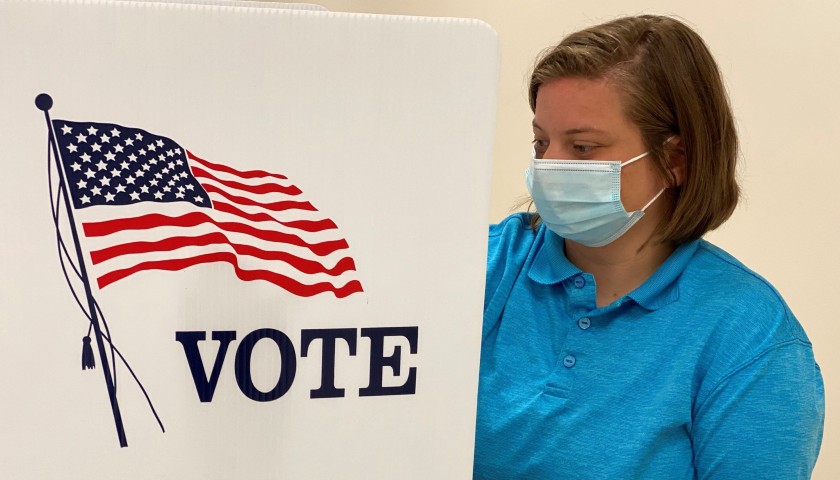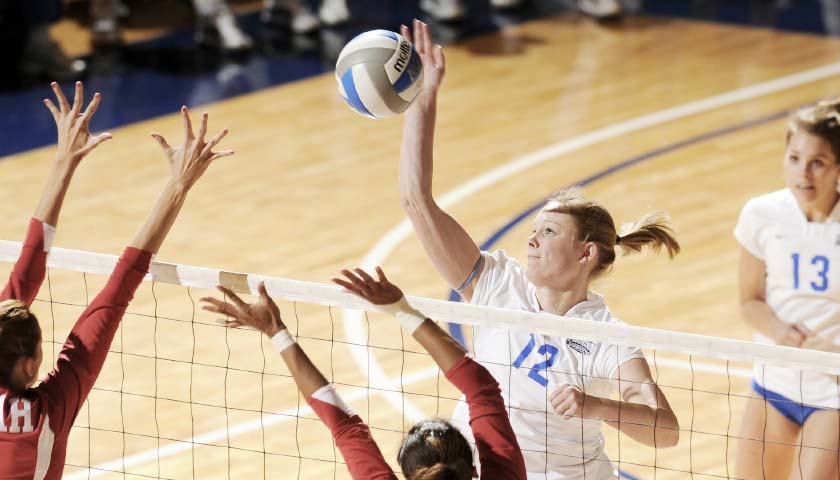by Robert Romano
In the closing days of the presidential campaign, amid a surge in support for President Donald Trump in many battleground state polls, media outlets are reporting rising confirmed Covid cases in states like Wisconsin and New Mexico but also nationally as the cold and flu season kicks into gear.
“Wisconsin faces Covid-19 crisis as coronavirus cases continue to rise, governor says,” reads one headline from CNN.
“New Mexico hospitals plead for public to stop COVID-19 spread, patient surge,” KRQE reports.
“Hospitals Are Reeling Under a 46 Percent Spike in Covid-19 Patients,” screams the New York Times.
Now, in reality, probable total daily new cases are down from the April peak of 282,000 to 164,000 today, a drop of 42 percent, according to the Institute for Health Metrics and Evaluation (IHME), although it projects the number of cases should continue rising throughout the season.
So, here’s a question: Will maximum fear of the Covid virus suppress election turnout in 2020? Or will mail-in balloting actually end up increasing turnout? Or will turnout be about the same as it was in 2016?
So far, early and mail-in voting is far surpassing what was seen in 2016, with 81 million votes already cast, according to the U.S. Elections Project, and a significant percent of those are going to be from people who would otherwise vote in-person on Election Day. In 2016, 40.8 percent of the 136.7 million votes cast, or 55.7 million were cast early in-person or mailed in, according to the U.S. Election Assistance Commission.
In-person early voting is increasing, too. 17.2 percent of the electorate in 2016 voted in-person early, and in 2020, the 28.4 million early votes already cast is 20.7 percent of overall 2016 voting. Even more will vote over the weekend, still technically early voting.
For example, in North Carolina, early and mail-in absentee voting is 760,000 greater than in 2016, at 3.86 million in 2020 so far, according to data compiled by U.S. Elections Project. In 2016, 4.7 million people voted in North Carolina, of which, 3.1 million was early or mail-in voting.
6.9 million North Carolinians were registered in 2016, and in 2020 it’s up to 7.4 million, a 500,000 increase.
Currently, Democrats in North Carolina lead Republicans early and mail-in voting by 1.49 million to 1.2 million, a rough 290,000 edge, and 1.1 million unaffiliated have voted, too. But the Democratic to Republican edge is actually less than in 2016, when it was 305,000, despite the amount of early and mail-in voting being greater. That could be good news for Republicans.
That is because Democrats actually make up a smaller percent of early and mail-in voting in North Carolina compared to 2016. So far, Democrats make up 38.6 percent, but in 2016 it was 41.7 percent. And that is because of the 1.45 million mail-in ballots requested, only 852,000 have been returned, leaving roughly 600,000 ballots unreturned: 271,000 missing ballots from Democrats, 117,000 missing ballots from Republicans and 207,000 missing unaffiliated ballots.
So, mail-in could wind up being a problem for Democrats if all of their people who otherwise would have voted in-person don’t vote. U.S. Election Project’s other numbers bear this emerging pattern of large amounts of unreturned Democratic ballots.
In Florida, Republicans lead in-person early voting by 400,000 and Democrats lead mail-in voting by 600,000, but of mail-in, Democrats have 733,000 absentee ballots yet to be mailed in that were requested, versus 553,000 for Republicans. Overall, 7.3 million have voted thus far, out of 9.4 million in 2016. And the registered voter population has increased by 1.1 million to 14 million from four years ago.
In Pennsylvania, a similar tale emerges, where Democrats have 518,000 ballots yet to be mailed in that were requested, versus 320,000 for Republicans. 6.1 million voted last time, and so far, 2.1 million have voted early or by mail. Registered voters have increased by 300,000 million to 9 million from four years ago.
So, clearly, the Covid panic has certainly increased early and mail-in absentee voting. But there is a lot of vote still out there to be had over the weekend and on Election Day.
And on that count, President Trump may have a great advantage: Republicans are less afraid of the virus than Democrats. The thinking is more Republicans will vote in-person. An Aug. 9-12 poll by Wall Street Journal/NBC News, 47 percent of Biden supporters plan on voting by mail this year, compared with just 11 percent of President Donald Trump’s supporters.
In the swing states of Florida, Pennsylvania, and North Carolina, 5.3 million Democrats requested absentee ballots versus 2.9 million Republicans, and 1.7 million independents, according to the U.S. Elections Project.
That roughly breaks down to 53.5 percent of the requested mail-ins are Democratic, 29 percent are Republican and 11.6 percent are unaffiliated.
Overall, nationwide, 90.3 million ballots have been requested (this also includes California, Oregon, Washington, Nevada and Utah that mailed out ballots to every registered voter), but only 52.9 million of those have been returned, or 58 percent.
If the 53.5 percent Democrats voting by mail figure in Florida, North Carolina and Pennsylvania holds nationally, of the 52.9 million ballots mailed in, only 28.3 million would be from Democrats. That could be enough, but it means they still need almost 38 million more people to vote in order to hit their 2016 total of almost 66 million.
Are Democrats hitting their hoped for numbers? It sure doesn’t look like it. If you exclude California, the Democratic vote total drops to 23.7 million. In-person voting will still be crucial for Democrats if Republicans match or exceed their 2016 totals.
Data from Gallup suggests Democrats are far more fearful of the virus: 70 percent of Democratic men and 73 percent of Democratic women say they avoid going to public places versus 31 percent of Republican men and 38 percent of Republican women.
Meaning the campaign of fear by news outlets could actually be helping Republicans by suppressing Democratic turnout more than it suppresses GOP turnout.
Does that make Republicans 2 to 1 more likely to turn out on Election Day? We’re about to find out. With only 58 percent of the vote total from 2016 in, the election will be won or lost on Election Day. The GOP’s get out the vote operations will have to be robust to overcome the Democrats’ mail-in advantage.
The presumption is that President Trump wins the votes he needs on Election Day, and there are tens of millions of Americans who have not voted yet. So, the race boils down to if Democrats mailed in enough ballots or not, and whether Republicans show up in the greater numbers they need for in-person voting on Tuesday.
– – –
Robert Romano is the Vice President of Public Policy at Americans for Limited Government.
Photo “COVID Vote” by The National Guard CC BY 2.0.





